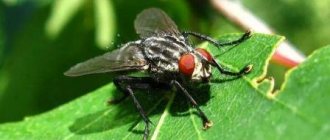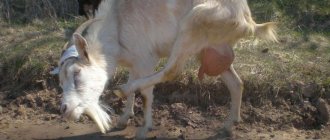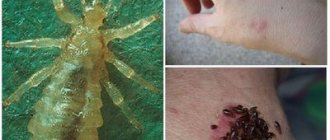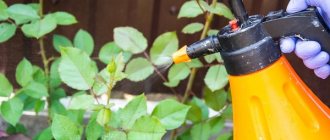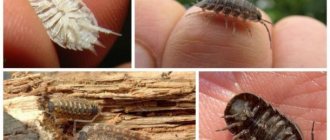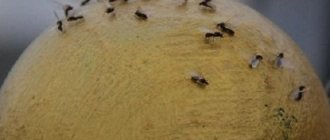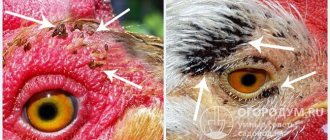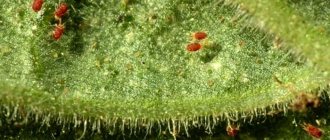Click beetles are a fairly large family in the order of beetles. Scientists have described more than 10 thousand species, which, after detailed study, were combined into 400 genera. The click beetle got its name for the characteristic click-like sound it makes when moving or trying to roll over from its back to its paws.
Click beetles are pests
These beetles live everywhere - from the Arctic to the tropics. They differ in color. In cold regions, dark beetles are found: black, brown with a metallic tint, striped. In the tropics and subtropics there are bright species of click beetles, displaying colors from red to green. Russia is home to steppe click beetles - dark, striped beetles that are pests of vegetable gardens. Next we will talk about them.
What are the main characteristics of the click beetle?
The sound made by the click beetle is not the only characteristic of this insect. Most of these beetles have an oblong body and a head that occupies a third of the length of the entire insect. Its larvae have an oblong, elongated shape, for which they were popularly nicknamed wireworms. The click beetle has a body size of within two centimeters. The main characteristics are given in the table.
| Options | General, uniting | Distinctive |
| Ways to move | ||
| Body Shape | The oblong head occupies a third of the body. Adults have wings and are capable of flight. All click beetles are endowed with a special mechanism that helps them turn over from their backs onto their paws. There are three pairs of paws with which they move on the ground and plants. | Sizes vary from 0.1-6 cm. |
| Dimensions | The sizes of different types vary from 0.1-6 cm. | |
| Color | The coloring of different species is different. Some of them have a pattern in the form of spots on the back. Tropical beetles have a bright color. | |
| Reproduction | Laying of eggs from which larvae are formed. The female never lays all her eggs in one place. One clutch contains 5-7 eggs. In everyday life, the larvae are called wireworms for their elongated body shape, divided into 13 members. The development of the click beetle larva lasts 3-5 years, depending on living conditions. | The larvae of individual click beetle species vary in color and size. |
| Spreading | These insects can be found everywhere, from the subarctic to the tropics. Only tropical species have been studied to a lesser extent than the inhabitants of northern latitudes. | According to the place of distribution and habitat. For example, true click beetles (Ampedus) live in forests. Nutcrackers prefer fields and vegetable gardens. |
| Protection from enemies | Does not use wings. Sensing danger, it begins to jump, click, and tries to carry its legs away. | |
| Nutrition | These beetles differ in the feeding of their larvae. Ampedus are predators. Nutcrackers are phytophagous and are pests of agricultural crops. |
Tselinnik, Strigun, Kravchik
Large beetles, reaching 3.5 cm in length, prefer to live on untouched lands, but with the development of agriculture and human occupation, more and more land areas are settling in the vicinity of cultivated areas, which makes it easier for them to find food.
The head is flattened, large with a straight line connecting the forehead and clypeus, with a pair of cheek protrusions located at the edges of the eyes.
In front of the eyes there is a pair of hard antennae, at the ends of which there are brush-like thickenings. Males have fang-shaped hard processes on the jaw, which males use to win the right to mate. The mandibles, covered with short hairs, are hidden between the biting fangs. In females, the jaw processes are smoothly rounded and have no fangs. Gardeners are annoyed by ants, Colorado potato beetles, mole crickets, May beetles, bugs, leafhoppers, wasps, cutworms, and locusts.
The body of the beetle is massive, the elongated head part smoothly passes into a powerful wide chest and ends with a rounded abdomen. In general, the beetle's body looks convex, as if covered in a shell. The color can be matte black or black with a blue sheen in the sun.
The Strigun has three pairs of tenacious and strong limbs, which are covered with stiff hairs, and there are claws at the ends of the paws.
The wings are not developed, this species does not fly, it has hard and short, fused elytra.
Did you know? Beetles are the most numerous family of insects, making up about 40% of all available individuals. Entomologists believe that there are more than five million species of beetles, although only 350 thousand have been studied to date.
What does a beetle eat?
Most click beetles are omnivores. In Russia, steppe click beetles live - dark beetles that are pests of vegetable gardens. They especially love potatoes and other root vegetables. The striped click beetle prefers cereals and sunflowers. The small beetle also feeds on the roots of cereals and sunflowers, indulges in the pleasure of sugar beets and peanuts, and eats swollen seeds and seedlings, thereby reducing agricultural yields. The blood-spotted click beetle prefers pine and birch roots.
These beetles cause serious damage to many trees.
Description of the individual
Wireworms are the larva of an adult click beetle. These are black beetles that lay larvae in the ground. These larvae then damage the crop, begin to feed on roots, and eat potatoes and flower tubers.
In winter, the larva huddles in the soil under the snow. Deep in the earth she is warm. When it gets warm, the insect crawls to the surface. The wireworm loves warmth, humidity, and acidic soil. Therefore, when fighting it, it is necessary to first get rid of too acidic soil. They grow well when the air warms up to twenty degrees in spring.
The bugs lay eggs not only on tubers, but also destroy all bulbous flowers, bean roots, beets, wheat, and corn. They don't leave plants alive. That is why it is necessary to fight them.
The beetles are also called nutcrackers because of the sound they make, as if they were clicking. They have a long, elongated body covered in black armor. It is very hard that it is impossible to crush it.
Where does the beetle live?
Adults live openly. They can be found on trees, shrubs, and grass. Sometimes they hide in the bark of trees. Eggs are laid in the ground, so digging up the soil in autumn after the harvest is considered an effective method of combating nutcrackers and other pests living in the soil. Sometimes nutcrackers drop into houses (especially in rural areas). If you see an oblong beetle in a house, it should be destroyed immediately, as it does not disdain human food.
The woolly click beetle lives in fields and meadows. It is harmless, on the contrary, it is useful because it pollinates plants.
Conditions of appearance
Pests appear in garden plots for various reasons. Firstly, it can easily penetrate from neighboring areas and lay eggs. Often the owners themselves are to blame for the appearance of a click beetle on their property. As a rule, few people adhere to agrotechnical rules in garden plots, planting crops in one place every year. This is especially true for potato plantings, since the weight volume of such plantings is always greater compared to other crops. Potatoes have to be planted every year and there is simply nowhere to move the plantings of this crop, considering how much land the gardener has. Even in villages where people have more land, no one seriously thinks about this problem: they planted potatoes in one place and continue to do so from year to year.
How is the agricultural method used?
Agrotechnical methods of combating the click beetle mean:
Read on topic:
Features of the life activity of ladybugs
14.11.2020
Description of chironomids and their possible danger to humans
14.11.2020
What do cutworms look like and what harm do they cause?
14.11.2020
What do goliath beetles look like and can they be bred at home?
14.11.2020
- digging up the earth in autumn and winter;
- alkalization of soils by adding ash or lime;
- It is recommended to place potato crops in the new year in areas where legumes grew a year ago.
Ash helps remove beetles.
Frequent weeding of the beds gets rid of not only weeds, but also pests.
In order to reduce the number of click beetles, baits made from cut potatoes are laid out in greenhouses before planting. Baits must be checked regularly and any larvae that have entered the potatoes must be destroyed.
Spicy plants such as mustard, rapeseed, oilseed radish, as well as sweet clover, peas, and spinach repel the beetle.
When planting potatoes, it is recommended to plant beans every three bushes, which nutcrackers also do not favor. You can scatter onion peels under the potatoes, and before planting the potatoes, wash the tubers with onion broth.
Features of the life of the parasite
With the arrival of spring, female beetles climb to the surface of the ground and lay eggs. Each individual can produce offspring of 100-150 eggs. In this case, there are 3-5 testicles in the pile. Under favorable conditions, the eggs transform into larvae within a month.
In the first year of life, click beetle larvae do not harm plants. However, in the second year of life they cause serious damage to agricultural crops. The strong structure of insects helps to break through the roots and promotes their loosening. As a result, vegetables become unusable.
Nutcrackers feed on swollen buds, they eat potatoes, and attack the stems, leaves and roots of plants. After 3-4 years, the larvae turn into pupae. With the arrival of spring, new beetles crawl to the surface of the earth.
What chemicals are allowed?
The larvae of the click beetle (wireworms) die when ammonia and potassium fertilizers are added to the soil. For example, ammonium sulfate, which serves as a fertilizer for plants, is toxic to these insects. Treating the wells with a solution of potassium permanganate (potassium permanganate) also gives good results.
To fight, you can use a remedy called Gaucho
Seed dressing also has a good effect. Approximately 2 weeks before the main planting of crops, seeds treated with one of the following products (Gaucho, Taboo, Cruiser, Prestige) are added to the soil. The larvae eat the poisoned seeds and die.
At the larval stage, the click beetle dies when exposed to ammonia and potassium forms of fertilizers. A consistently toxic result for insects is achieved by applying ammonium sulfate in the spring at a rate of 25 g per m². Seedlings can be protected by pre-treating the planting hole with a weak solution of potassium permanganate.
Harm from wireworm
Black beetles on potatoes and other crops are considered an alarming symptom. They gnaw vegetable tubers and damage cereals. As a result, the plant becomes significantly weaker. Insect damage leads to a slowdown in the development of tops. Pests make holes in root crops, which negatively affects the quality of the crop. The larvae also carry fungal diseases and bacteria.
Affected vegetables lose their marketable value. In addition, they cannot be eaten, due to a significant reduction in storage period. Such root crops quickly begin to rot. The click beetle also poses a threat to humans. This is due to the need to use chemicals. Toxins accumulate in fruits and soil. This negatively affects the harvest next year.
How to make traps
Amateur gardeners came up with such a trap for a malicious pest. Take a liter plastic bottle. The neck with a small part of the body is cut off. A stopper is not needed. The inverted neck is inserted into the lower part of the bottle, where a little beer was previously poured (for the smell). To prevent large and beneficial insects and small frogs from falling into the trap, a stopper nail should be inserted immediately under the neck. Wireworms will freely crawl under the nail into the neck and plop down into the bottom of the bottle, right into the beer, and they won’t be able to get out of there. Several similar traps can be placed at some distance from each other, sprinkled lightly with earth. To prevent the beer from leaking out, it is recommended to lift the trap at a slight angle.
You will learn more about click beetles from the video:
Chemists synthesized female pheromones. This substance attracts males for reproduction. A capsule with a pheromone is placed on a sticky trap, where the males are caught. Thus, the fertility of beetles in the area decreases, and accordingly, the laying of eggs and the appearance of larvae decreases.
Preventive recommendations
A number of useful recommendations from specialists and experienced gardeners will help prevent the appearance of many pests on the site, including wireworms.
What to do:
- Timely removal of weeds will help in the fight against many pests.
- It is advisable to follow the rules of crop rotation so as not to plant the same crop in one place.
- In autumn and spring, it is better to dig deep into the soil on the site.
- It is better to plant leguminous plants interspersed in potato beds.
- An integrated approach to the fight against wireworms will help achieve a positive result.
Inaction on a personal plot or summer cottage in terms of pest control can lead to complete loss of the crop. If someone has a negative attitude towards toxic substances, then at least with the help of simple traps, it is still worth fighting pests. In addition, good results can be obtained if you use a number of agrotechnical measures. Mandatory planting of crops on the site that are not included in the wireworm’s diet also bears fruit. So, a little bit of each method and we can already say that pests are unlikely to feel comfortable on the site.
Insect Reproduction
The female beetle has minimal external differences from the male. Female individual
slightly larger and wider, and also has very short antennae.
The flight of click beetles most often occurs against the air flow and is characterized by a low altitude. Continues for a month. The mating process takes place on the soil. The choice of place for laying eggs depends on microclimatic and feeding conditions. The optimal temperature for mating is from 17 to 25 °C. The humidity level should be 80%. In the non-chernozem region, such climatic conditions are typical for fields with cereal crops, in the northern regions - for areas occupied by spring crops, in the southern - winter crops.
Phylogeny
The family is divided into 13 subfamilies, nine of which in turn into 40 tribes, and five tribes into 20 subtribes[7]:
- subfamily: Oxynopterinae Candeze, 1857 tribe: Campsosternini Fleutiaux, 1927
- tribe: Oxynopterini Candeze, 1857
- subfamily: Pityobiinae Hyslop, 1917 tribe: Pectocerini Gurjeva, 1973
- tribe: Agrypnini Candeze, 1857
- subtribe: Tetralobina LaPorte, 1840
- subtribe: Heligmina Costa, 1975
- subtribe: Pyrophorina Candeze
- tribe: Hypnoidini Schwarz, 1906
- tribe: Pachyderini Fleutiaux, 1919 (Candeze, 1859)
- tribe: Dicrepidiini Candeze, 1859
- tribe: Aplastini Crowson, 1972
- tribe: Oestodini Hyslop, 1917
- tribe: Cardiophorini Candeze, 1860
- tribe: Aplastini Stibick, 1979
Chemicals to help
There are a lot of secrets on how to get rid of wireworms in a potato field. Their descriptions can be read on the Internet or in books about gardening. The use of chemicals is especially effective. After all, some elements are very poisonous for parasites.
To protect the plantings, it is recommended to fertilize the soil with ammonium sulfate in the spring. It contains ammonia, which is harmful to beetles. You can also treat planting sites on potato plots with manganese dissolved in water. But it is important to adjust the acidity level of the soil, as this can destroy the leaves and stems of the crop.
What to do if wireworm larvae have already settled on potatoes. Many gardeners use a special drug BB1 - an entomopathogenic fungus. It affects insects by germinating on their body. The parasites dry out, become covered with plaque, and cannot develop and function normally. Fungi suppress their vital activity. Before removing parasites with this fungus, the soil must be moistened.
There are other products that can be purchased in specialized stores: Force, Cruiser, Aktara, Prestige, Taboo. These products should be used to water the soil and planting material. You can ask store consultants about how to eliminate pests.
